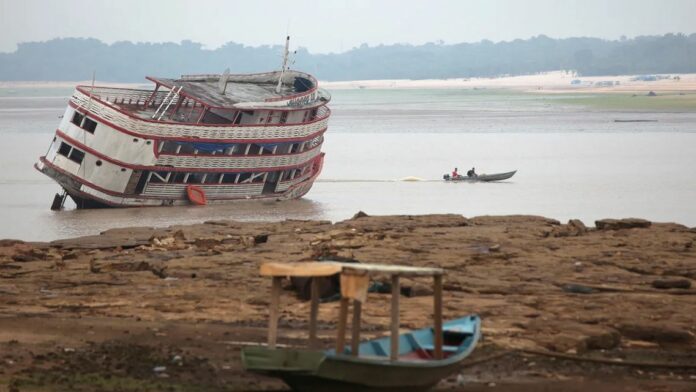
Rivers in the heart of the Amazon rainforest in Brazil fell to their lowest levels in over a century on Monday as a record drought upends the lives of hundreds of thousands of people and damages the jungle ecosystem.
The port of Manaus, the region’s most populous city, at the meeting of the Rio Negro and the Amazon River, recorded 13.59 meters (44.6 feet) of water on Monday, compared to 17.60 a year ago, according to its website. That is the lowest level since records began in 121 years ago in 1902, passing a previous all-time low set in 2010.
Rapidly drying tributaries to the mighty Amazon have left boats stranded, cutting off food and water supplies to remote villages, while high water temperatures are suspected of killing more than 100 endangered river dolphins.
After months without rain, rainforest villager Pedro Mendonca was relieved when a Brazilian NGO delivered supplies to his riverside community near Manaus late last week.
“We have gone three months without rain here in our community,” said Mendonca, who lives in Santa Helena do Ingles, west of Manaus, the capital of Amazonas state. “It is much hotter than past droughts.”
Some areas of the Amazon have seen the least rain from July to September since 1980, according to the Brazilian government disaster alert center, Cemaden.
Brazil’s Science Ministry blames the drought on the onset of the El Niño climate phenomenon this year, which is driving extreme weather patterns globally. In a statement earlier this month, the ministry said it expects the drought will last until at least December, when El Niño’s effects are forecast to peak.
Source: cnn.com








